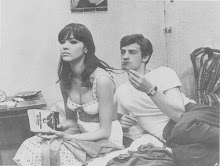6.21.2008
signs & symbols
On May 15, 1948, Signs & Symbols became the first Vladimir Nabokov short story published by The New Yorker. It was recently featured again in the monthly fiction podcast of the same magazine, where I encountered it for the first time. In a letter to then chief editor Katherine A. White, Vladimir famously comments that many of his stories function upon a scheme "wherein a second (main) story is woven into, or placed behind, the superficial semitransparent one" (Selected Letters). Simply by reading the title, the reader is tauntingly primed to dissect the symbol-imbued story.
Nabokov's entomological facilities, as suggested by Stephen Gould, stem from an ''almost obsessive attention to meticulous and accurate details" (Vera's Butterflies) that equally influence his literary creations. Like "Lolita" or "The Vane Sisters," "Signs & Symbols" is sedulously & deliberately written such that the synthesist reader may unthread both plot & story.
Throughout sixty years, various possible interpretations of "Signs & Symbols" have surfaced, but perhaps Nabokov never intended for it to possess any fixed meaningful analysis. The actuality of the message behind that third call is irrelevant to what Nabokov is expressing - that the "referential mania" of assigning our own significations places us in a fatal maddening silence.
* Bruegel's painting is described in "Signs & Symbols" as "an idyllic landscape with rocks on a hillside and an old cart wheel hanging from the branch of a leafless tree" (also machinery used for torture).
Read it for yourself here.
Read an interpretation of its arbitrary signs & symbols here.
Subscribe to:
Post Comments (Atom)



No comments:
Post a Comment